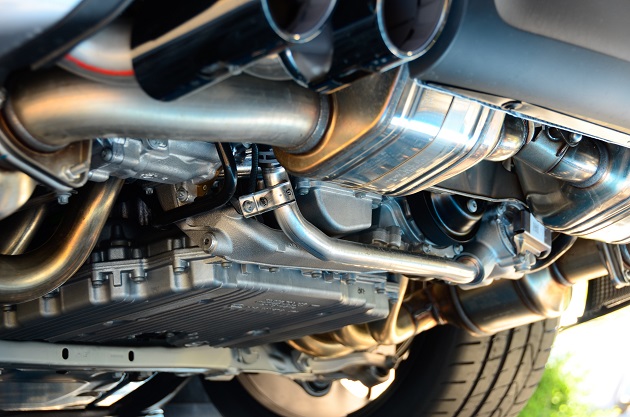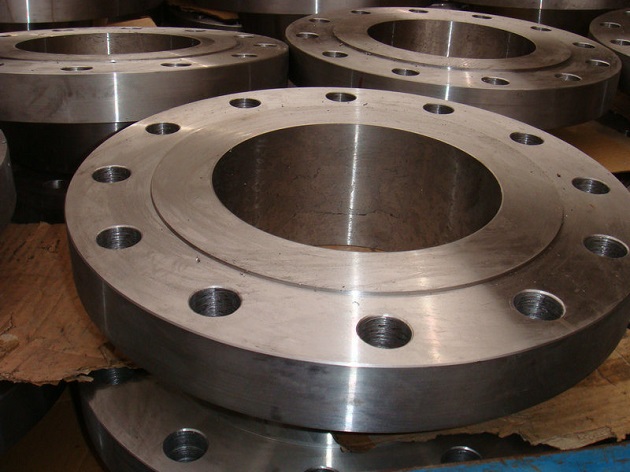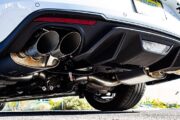Aftermarket exhausts are one of the most popular modifications performed on vehicles whose owners are looking for ways to add extra power and mileage to their ride without breaking their bank. But in order to get the most value out of an aftermarket exhaust system, you need to make sure you get the right one for the application. This will depend on several different factors, including your budget. The expense factors include the number of pipes (single vs. dual exhaust systems), materials (mild vs. aluminised vs stainless steel), the pipe-bending techniques used, and the speciality coating. Further, the price will depend on how much of your stock exhaust system you want to replace. Some aftermarket exhaust system kits replace more stock exhaust parts than others, which will ultimately impact not just the price, but the gains you get from it as well.

When looking for aftermarket exhausts, you’ll find cat-back, axle-back and header-back kits. The difference between these systems is how much of the stock exhaust system they replace. Header-back exhaust systems replace the entire stock exhaust system and thus offer the most performance and mileage benefits. As a result, header-back exhausts are the most expensive option out of the three. Cat-back exhaust systems replace the catalytic converter and everything that comes after it, including mufflers, exhaust tip and the pipes connecting these parts. These systems offer the best value in terms of money to performance and mileage gained. And lastly, axle-back exhaust systems replace the mufflers and the exhaust tip only, which doesn’t impact performance in any way, but it can change how your vehicle sounds and looks.
Regardless of what type of aftermarket exhaust kit you decide to go for, you need to make sure it fits your vehicle properly and that it doesn’t compromise your vehicle’s clearance. Most exhaust kits include all the necessary parts for proper fitment, including appropriately sized headers, mild steel flanges, a suitable catalytic converter that meets the emission regulations of the state you’re in, mufflers, all the necessary pipes, including the exhaust tailpipe, and an exhaust tip.

The parts of an exhaust system can be made from either mild steel, aluminised steel or stainless steel. Mild steel is the most affordable option. You can easily find parts for your specific type of vehicle made of mild steel, even the smaller accessories like mild steel flanges. Aluminised steel is of higher quality than mild steel, but you should also expect to pay more for an aluminised steel exhaust. Aluminised steel is lightweight, features good corrosion-resistant properties, and is quite durable. Unlike mild steel flanges and other mild steel accessories, there aren’t many accessories made of aluminised steel. Stainless steel is the strongest out of all three materials, and as a result, the most expensive one. Stainless steel exhausts and parts are very corrosion-resistant, perform well in all climates, and they’ll likely outlast your vehicle, making them an ideal long-term investment.

As aforementioned, the technique used to bend the pipes can impact how freely your gases flow throughout the entire system. Stock exhaust systems are usually manufactured using crush or wrinkle bending. These bending techniques are simple and affordable, but also cause restrictions due to the fact that during the manufacturing process, only a radius die and backing shoes are employed, without a mandrel to support the tube, which results in bends being formed on the inside of the radius. Aftermarket exhaust pipes, on the other hand, employ the aforementioned mandrel, which helps keep the diameter of the pipes consistent, providing a smoother, uninterrupted bend free of creases and kinks. As a result, mandrel-bent pipes and tubes provide restriction-free flow for the gases, allowing them to escape the system faster, as well as allowing more fresh air to go into the combustion chamber.
And lastly, you have to decide whether you want to keep your single-exhaust system configuration or convert to a dual system. Single exhaust systems are more affordable, and they perform just fine. However, if you’re shopping for an aftermarket exhaust system, chances are you’re looking for something that’s better than just fine. Dual exhaust systems provide improve breathing, which reduces exhaust restriction and improves bank-to-bank exhaust-pulse balancing. Furthermore, dual exhaust systems make your engine sound better and look better, plain and simple. However, before you install a dual exhaust system, you have to consider the manifold cap, pipe hangers, the materials, connectors and the fitment. That being said, changing from a single to a dual exhaust system can be quite the task, and it’s highly recommended that you have an experienced mechanic do it for you, unless you’re very skilled and knowledgeable on the matter. So you need to make sure you factor in these costs as well before deciding you want to upgrade to an aftermarket dual exhaust system. Of course, everyone charges different rates for their work, so ask your mechanic what would such an installation cost you before you order the exhaust.


